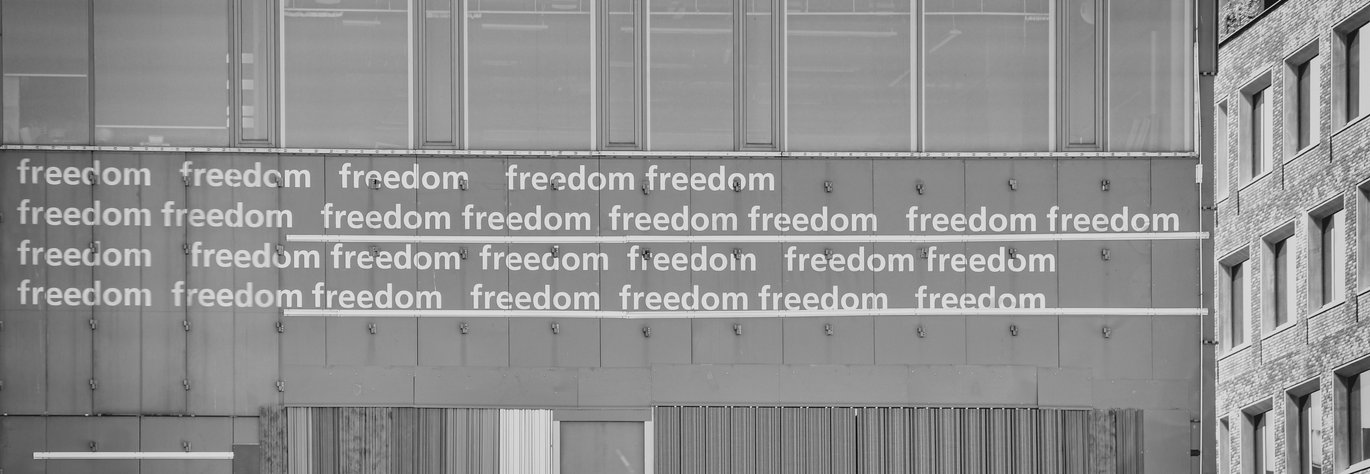Racial Colorblindness in the Nordic Region
Ethnic and racial studies shed light on race in the Nordics, with a focus on Sweden.

Summary: The official understanding of race in Sweden is that it is of little or no importance because everyone is in any event equal. Although it is meant to be anti-racist, this approach leads to important inequalities going unseen. Research in ethnic and race studies show that race is socially constructed and that race as a category cannot be completely set aside because colourblindness leads to discrimination and oppression going undetected or ignored.
In 2009, Sweden removed the term ”race" (ras ) from its Discrimination Act (Diskrimineringslag 2008:567) and replaced the term with the proxy term ”ethnic belonging”, and in 2014, the government decided to remove the term ”race” from all legislation. But removing the term does not remove racism itself. ”Colorblindness” is a term used to refer to not attributing racial characteristics to someone (be they visible or otherwise). The intention with colourblindness is usually positive: We should be anti-racist and treat everyone equally as if they are the same colour. However, it can actually have negative effects. It can allow important inequalities to go under the radar, and feed into a lack of recognition for multigenerational discrimination and oppression. It can also go against the celebration of difference. What does race mean actually? And does it help to erase it as a term – to strive after being colourblind?
What is race?
Some people are frightened to talk about ”race” and substitute it with other words like ethnicity, nationality, country of origin or racialization, which may feel seemingly less harsh. The word ”race” is often associated with the outward appearance of someone (their phenotype) and is more often than not used in contexts when talking about non-white people. In this way, white people tend to be the exception to the rule and become somehow raceless - but this is not in fact the case. When reading this article (at least if you come from a Nordic country), you may assume that it is about non-white people because it is about race, but white people also have a race. In my understanding of race (as a social construct), white people are also racialized as there is no racial category that is completely ”neutral”.
Race as a social construct
Research in the field of ethnic and racial studies can be helpful as it has differing perspectives on what race actually is. I support the particular view of race that sees it as a social construct. This means that it is not something that is inherent or essential to a person, but something that is projected on to that person by society. This projection is complex as it involves many layers to do with cultural norms, values and institutions. All these things socialize individuals into racialized understandings of the world and identities, which are, in turn, maintained by these understandings. Researchers have looked into these layers and they can be summed up broadly into the following levels:
- Multilevel – The multilevel considers the ecological levels at which race is constructed, maintained and acts through the institutionalized structure of hierarchy, social arrangements and organizations which normalise and reproduce racial structure.
- Individual - At the individual level, racism is embedded into our judgements and beliefs about ourselves and others, and in the actions we take that reflect those beliefs.
- Interpersonal – At the interpersonal level, racism is embedded into our social interactions, whether or not we choose to see the effects of race and whether or not we intend to enact and/or choose to resist our racialized beliefs.
- Institutional – At the systematic level, racism is manifested in forms of explicit and implicit policies, law and institutional arrangements, which maintain inequality in health, education, labor and the housing market.
Because race is socially constructed, race is about socially constructed boundaries of power, privilege and oppression. Individuals may choose whether or how they identify with a given racial category, but they cannot choose whether or how they will be racialized or racially characterized by others. It is difficult to separate one’s personal racial identity from what is going on in the world or in a particular context (as much as someone may seek to do so). People have to negotiate these four levels of racial encounters regularly on an everyday basis. Shared experiences, such as history and oppression, also influence identity of course, which can lead to resilience and resistance in the face of oppression as well as to mobilisation (often of particular groups of people). This includes active attempts to redefine meanings of racial categories.
How does race and colourblindness play out in Sweden today?
Proponents of colourblindness argue that it is their way of tackling racism: Race as a social category is irrelevant in discussing discrimination, inequality and social injustice. Pursuit of this ideal is possible because human rights, democracy, gender equality and anti-racism are already achieved by the existing anti-discrimination legislation. But others believe that it is absurd to talk (and fight) racism without being able to define or talk about race itself. In this way the term ’colourblindness’ is important. Denying the manifestation of race through social understanding and hierarchy has significant material, psychological and relational costs. To try to ”go beyond race” is simply to pretend that racism and racial discrimination do not exist, even if they are causing harm.
Given the multi-layered conception of race and given that the perception of race can change depending on context, it is very difficult to sum up how race plays out in the Nordics today as a whole. However, I can give some pointers based on the research I have done and the numerous interviews I have undertaken predominantly in Sweden.
McEachrance (2014) argues that the political rejection of race has led to a rather contradictory situation. While on the one hand, “race” is said to have no meaning, social distinctions or proxy terms, such as ethnicity, religion and nationality, are attributed more meaning. These terms are directed only towards those who are not majority Swedish, i.e. those who are not racialized as White, and in turn end up functioning as proxies for race. In fact, in 2014 in Sweden, ”rasiferad” (racialized) even became the official word that should be used instead of race, and the term ”racialized” is also widespread in Denmark, particularly amongst academics and in certain media. ”Racialized” seems less harsh than simply ”race” to some people as it refers to a group of people who are subjects of racialization in a given context. However, the current language of racialization and using the term racialized without addressing specific racial groups obscures the various processes and ways different groups of people are categorized to form a racial group based on different structures of power and privilege. In his 2020 book Lentin puts it thus:
”Ignoring race and denying that it matters or reaching for euphemisms that comforts White anxieties will not make race matter any less than it does.” (A. Lentin, Why race still matters. (Wiley, 2020) p.178)
Interviews with multiracial and multi-ethnic Swedes
Through conducting interviews in (mainly) Sweden, my research tends to show that ”Swedishness” is linked to the phenotype of being White; it is quite binary: White = Swedish / non-White = not Swedish:
”Because despite everything, it feels like it is not possible [to be accepted as Swedish]. I know that if I say so [Swedish], they [people] will say against me [that I am not]. […] At the same time, if I can’t say that, what else am I?” (The words of an interviewee in Sayaka, 2020, p. 6).
This approach is cemented by the way authorities keep statistics. Mixed Swedes are statistically invisible and are incorporated into the category ”Swedish background”, defined as people who are born in Sweden and have at least one parent born in Sweden (Statistics Sweden, 2018). This fits in, again, with the colourblind approach and makes research arguably more challenging. It also does not fit in with the rise of the mixed population globally and multigeneranational experiences of mixed populations. That said, it is possible to say that, in 2018, 18% of the 10 million residents of Sweden were born abroad. Five percent of people born in Sweden had two foreign-born parents, while seven percent of those born in Sweden were the children of bi-national marriages (having both a Swedish-born parent and a foreign-born parent).

In 2019, I conducted in-depth interviews with 21 multiracial and multi-ethnic Swedes. There was quite a lot of discussion about whether multiracial Swedes can ”pass” as White and/or Swedish. Interestingly, certain migrant groups which were once racialized as non-Swedes, are now deracialized e.g. Italians, ex-Yugoslav etc. But being able to ”pass” as a yardstick for success is deeply problematic, despite the associated privileges it inevitably brings with it. Firstly, it does not always sit well with everybody as there can be a sense of identity mismatch between how someone perceives themselves and how they are perceived by others. Many of the people I have interviewed consider that Swedishness should embrace a variety of backgrounds. It is also possible to argue that the growing mixed population in Sweden need to be recognized. Some interviewees and researchers alike have suggested that racial connotations of Swedishness be replaced with a sense of national belonging (see Song and Aspinall 2012 and my paper from 2020 for more on this). Secondly, some of the people I have interviewed have found it very important to not ”pass” or conform to the either/or categories, and wish to forge their own categories:
”You do not need to put me into boxes.” (Interviewee reported in Sayaka, 2020, p.12)
Based on my research, I would argue that the argument to try to move beyond race and to erase ”race” from e.g. legislation does not in fact help, but actually supports the maintenance of race as a hierarchy. It paints an illusion of equality without dealing with important underlying issues. Race as an analytical category is important in order to address oppression and this is because race is socialized into our worldviews and integrated into our institutions across generations – whether we like it not.
Content for this article is taken from three previous articles by the author:
- Sayaka Osanami Törngren, ‘Challenging the ‘Swedish’ and ‘Immigrant’ Dichotomy: How do Multiracial and Multi-ethnic Swedes Identify Themselves?’, Journal of Intercultural Studies, 41, 4 (2020) pp. 457-473;
- Sayaka Osanami Törngren , ‘Understanding Race in Sweden: The Racialisation and Deracialisation of Multiethnic and Multiracial Swedes’, Nordic Journal of Social Research, 13, 1 (2022) pp. 51–66;
- Sayaka Osanami Törngren and Karen L. Suyemoto, ‘What does it mean to “go beyond race?’, Comparative Migration Studies 10, 9 (2022).
Ethnic and racial studies shed light on race in the Nordics.
This article is published in response to readers' interest in issues to do with integration and race in the Nordic region.
Further reading
- A. Lentin, Why race still matters. (Wiley, 2020).
- C. Lundström and T. Hübinette, Vit melankoli: En analys av en nation i kris [White Melancholy: An Analysis of a Nation in Crisis]. (Makadam Förlag, 2020).
- D.T. Goldberg, Are we all postracial yet? (Wiley, 2015).
- Karen L Suyemoto, Roxanne A Donovan, and Grace S Kim, Unraveling Assumptions: A Primer for Understanding Oppression and Privilege. (Routledge, 2022).
- Lola Akinmade Akerstrom, In Every Mirror She's Black. (Apollo, 2022).
- M. Song, and P. Aspinall, ’Is Racial Mismatch a Problem for Young ‘Mixed Race’ People in Britain? The Findings of Qualitative Research’. Ethnicities, 12, 6 (2012) pp. 730–753.


